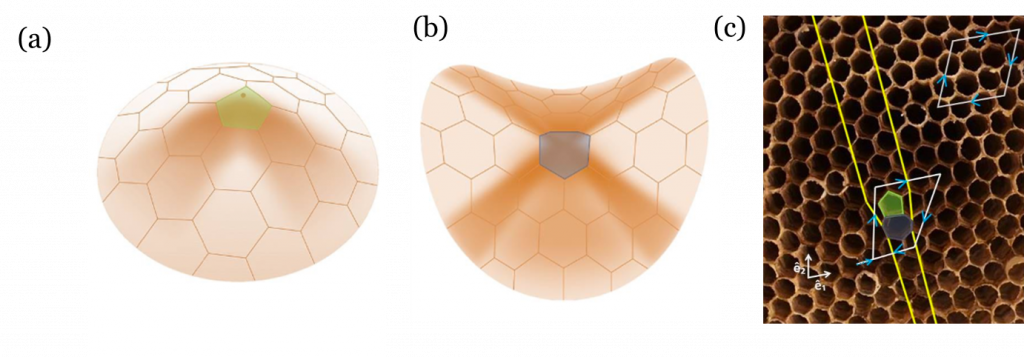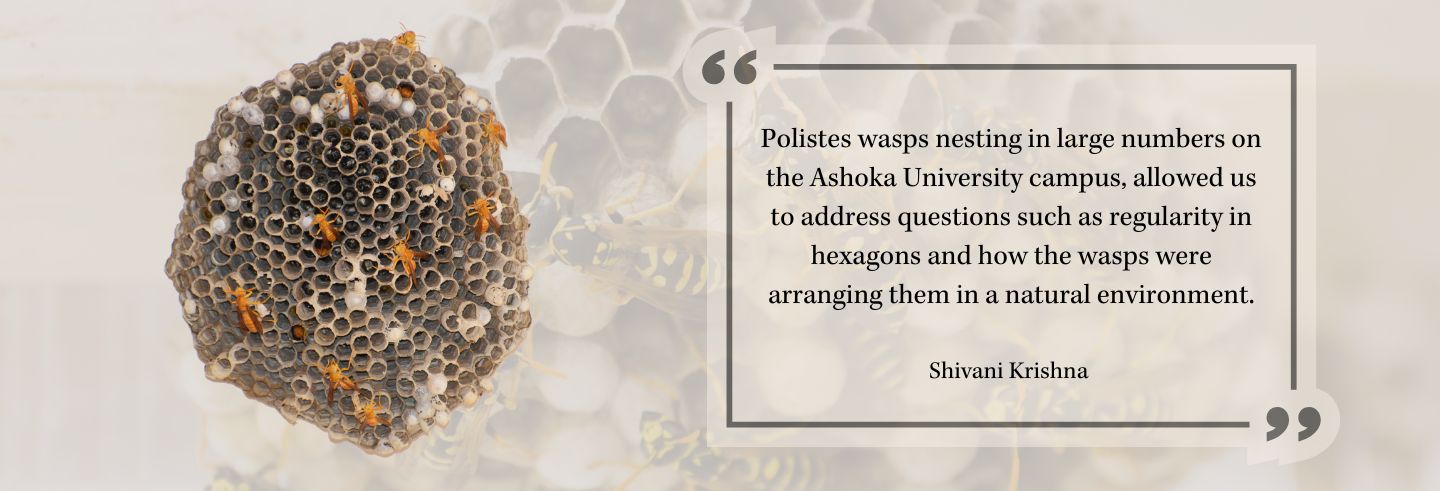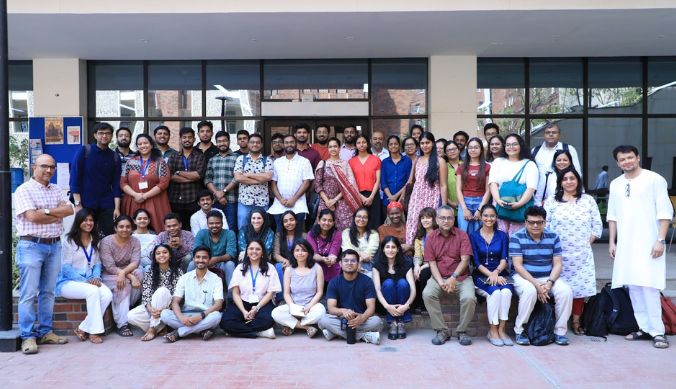Solving an enigma of nesting structures by nature’s architects
This research conducted by Prof Shivani Krishna and her team show how social wasps recognize emergent topological defects
ফড়িঙের ডানাতেও এ জীবন দেয় ডাক
বেঁচে থাক সব্বাই, হাতে হাত রাখা থাক
— Kabir Suman, “Sara Dao” (in Bengali)
Life calls out even from a wild wasp’s wing
May everyone live, hold hands and always sing
— English adaptation by Prof Arunava Sinha
For centuries now, nests of social insects such as bees, wasps, and ants have attracted the attention of ecologists. In bees and wasps* cells within the nest are usually hexagonal. This preference to build hexagonal-shaped cells was attributed to compactness. Darwin himself conducted experiments to understand how bees built these structures. It is now well known that a hexagonal lattice is the most efficient way to divide a plane into regions of equal area with the least total perimeter (honeycomb conjecture).
How do hundreds of individuals come together and build a periodic hexagonal lattice? What happens when there are errors in this construction process or tiling? Polistes wasps nesting in large numbers on the Ashoka University campus, allowed us to address questions such as regularity in hexagons and how the wasps were arranging them in a natural environment. Polistes wasps are social wasp species that use plant fibers for their nest construction. Unlike honeybees that use wax, nesting material used by wasps is relatively difficult to manipulate.
This puzzle on how wasps correct any errors given their non-plastic structural material drew us to this problem. We then decided to take a closer look by bringing down some of the nests made by these wasps after they completed their nesting season.

We systematically collected nests, took images with a scale, identified the vertices of individual hexagonal cells from these images, and mapped them. Using these coordinates, we analyzed how homogenous these hexagons and their organization were in relation to a periodic hexagonal net. We found that the wasps carefully laid out hexagons such that there were no gaps in between. While analyzing this, we found something astonishing in their nests.
Mathematicians have worked on principles involving continuity and deformability. While these have gained attention in understanding basic phases of matter to cosmological patterns, they were never considered relevant in the context of social insect nests.
Shivani Krishna, Assistant Professor of Biology at Ashoka University discusses in her study published in the Scientific reports what it means to have non-hexagonal cells such as pentagons and heptagons in such nests. These pentagons and heptagons were also found to always co-occur in proximity. This seems to be a very ingenious way of ensuring planarity when errors occur. For some reason, during the construction process, when a pentagon occurs by mistake, the wasps cannot simply leave it as such if they wish to continue with the construction as this may lead to a curved structure (similar to a hat). On the other hand, if a heptagon occurs, the whole system tends to be saddle-shaped. In wasp nests, to ensure the nest remains planar without curvature or distortion, which incur the cost of more material and stability issues, the wasps add a heptagon adjacent to a pentagon and vice-versa.
This is an astonishing architectural feat, where wasps can avoid deviations from planarity in their nests by fixing non-hexagonal cells using geometrical rules known primarily from crystal structures, skyrmions, protein folding, viral outer coats, etc. This opens an exciting avenue of intriguing questions at the interface of ecology and physics, cutting across multiple scales.

*Wasp is a social winged insect that has a narrow waist and a sting and is typically yellow with black stripes.
(Edited by Dr Yukti Arora)
Reference Article: Ordering and topological defects in social wasps’ nests, Scientific Reports, July 2022 | Volume 12 | Article 12901
Study at Ashoka














